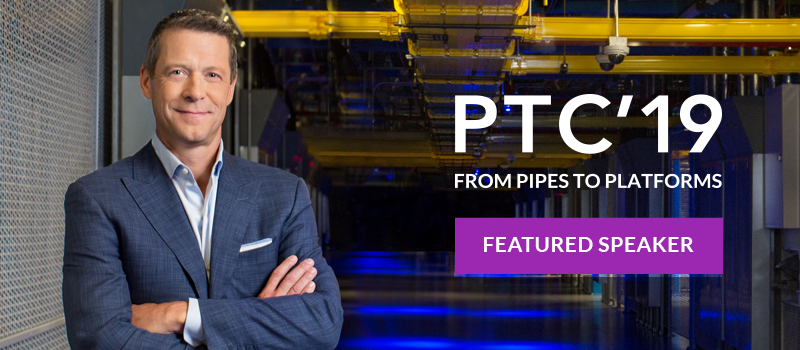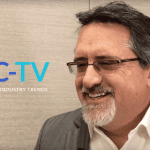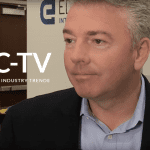
Charles Meyers says digital transformation is taking hold across the world with far reaching implications for the entire business community and the suppliers that serve them.
If Charles Meyers, newly-installed President and CEO of Equinix, now the world’s largest colocation and interconnection provider, has a prime goal, it’s for the company “to be the trusted center of a cloud-first world.”
This encapsulates what are, by any measure, epochal changes in an already dynamic industry. On the one hand, Equinix sees an enormous shift to a planetary economy dependent on digital processes, and a seismic restructuring of the digital transformation industries supporting that emerging economy, conversely.
The Transformation Agenda
For many companies digital transformation is clearly taking hold. There is an increasing pace of change pressuring corporate agendas, he expresses. “We are finding most global companies, and any who have global aspirations, will probably be viewing hybrid IT/cloud architectures as a desirable end state for their business requirements.”
On several measures, meanwhile, seismic industry restructuring seems already baked-in. The level of interconnection traffic, essentially private and direct traffic between business partners, is soaring as business ecosystems increasingly need real time, on-demand operations supporting very large data volumes.
Equinix’s own studies, drawn from Volume 2 of its annual Global Interconnection Index, indicate this interconnection traffic will reach 8,200Tbps of capacity, or the equivalent of 33 Zettabytes (ZB) of data exchange per year by 2021, effectively 10 times the projected capacity of Internet traffic.
Consequently, interconnection revenue has outpaced colocation revenue as the hybrid, multi-cloud becomes “the preferred IT deployment model.” The company directly connects nearly 10,000 companies to their customers and ecosystems through what it says is the world’s most interconnected data center and interconnection platform, in some 200 locations across 52 markets in 24 countries.
As a result, he suggests the desirable end state for most companies will use hybrid IT/cloud resources and direct connectivity to conduct their daily operations. As a forklift upgrade—he refers to it as “lift and shift”—digital transformation can mean a long corporate journey, he admits, although many have now reached “the midpoint” of their aspirations.
Some remain deterred by what they consider an extremely complex process. “[Digital transformation] is certainly nontrivial,” he conveys. Security of data preoccupies many. Data governance, privacy, and sovereignty also remain concerns, he acknowledges.
“Customers want optionality, flexibility, modularity in their systems,” remarks Mr. Meyers. “People are nervous about lock-in and about putting all their eggs in one basket.” Therefore, he believes, it’s essential to educate the market about the capabilities a strategic, trusted enabler, and a highly distributed supplier infrastructure will bring.
Meanwhile, the market is in flux. Ecosystems are complicated, boundaries and identities still relatively ill-defined. In such fluidity, what services the global data center and interconnection infrastructure could be expected to supply, and to whom, is still an emergent question. There is “a tendency of ebb and flow” here in terms of potential overlap between players and offerings, he claims. “There is a possible tension. We need to be thoughtful, and ask: where do we have market permission to enter [this space]?”
Already, he states, the market demands key attributes. The short history of the global data center industry has seen a tectonic move away from largely an in-house ownership by major telcos into specialized, high performance offerings where colocation and interconnection are demanded. “Scale, reach and service excellence are fundamental to the digital infrastructure business,” he expresses.
Because of this, some players have decided to relinquish subscale or noncore data center interests, providing opportunities for Equinix to expand. A string of acquisitions, most notably 29 data centers from Verizon, plus multiple deals in markets such as UK, Turkey, Spain, Portugal, and Australia have added scale to the company over the past two years. Earlier this year, Equinix also acquired the facility and operations of the Infomart Dallas, a regional U.S. player, to further strengthen its platform. Many on the acquisition list have brought subscale or highly regionalized providers into the Equinix fold. Organic growth has also been very important and saw new data center developments in Amsterdam, Frankfurt, Hong Kong, Sao Paulo, Silicon Valley and Washington, D.C. Developing deeper partnerships with other major suppliers alongside Equinix’s own channel will also be key.
Leveraging People
Growth at breakneck speed—in a company that has seen double digit annual increases and now stands at USD5 billion in revenues—requires heavy focus on business development. Leverage is a recurrent word in his vocabulary. “My belief is that people are the source of leverage for the business. It is people, at the end of the day, business is done by people,” he declares.
He acknowledges the role of the CEO is changing. There must be an agenda, he proclaims, “to empower people to be the best they can be, giving them a commonality of purpose, providing them with inspiration, and of course, the right tools to get the job done.”
For an individual, it’s vital the company communicates a fundamental culture that means safety, belonging, and individual value. In turn, employees should acknowledge their obligations to stakeholders across the business. He notes his own messaging hashtag, #inserviceto, is a reminder to every one of these obligations.
Mr. Meyers is looking for conceptual, as well as technical and business skills when hiring staff. “Customer experience is valuable, but I am less concerned about [specific] skills,” he states. “[Probably most important is] a fit for who we are.” He specifies other requirements: “Intellectual curiosity: how things work, and how they can be made to work better. Next is raw horsepower [in driving their job and objectives forward].”
Leadership development is also important, but frequently downplayed in the industry. One initiative he introduced elsewhere and brought to Equinix has been the Equinix Archimedes Leadership Program. Drawing on Archimedes’ fulcrum aphorism, he reveals, the leverage he expects from people must extend to the way senior management is developed.
The outlook is one of continued expansion, given the number of drivers, but it would be foolish to ignore the seismic shifts in the industry. “We are going to see a series of technological transformations,” he concludes. Top of the list would be AI, and the intersection of AI and IoT. He also suggests we are about to see the front edge of blockchain appear in the industry, expecting as each of these key innovation trends mature in the market, they will gradually help to drive the Equinix business forward. In such a dynamic market, he is also wary of making specific predictions, but he counsels the industry to expect “a period of volatility.” Agility and adaptability are crucial management behaviors, he reflects, and “companies that are adaptive will succeed.”







